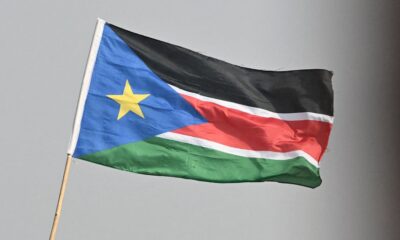Economy
Why Lamu Island Is At the Verge Of Losing Its World Heritage Status
There are mounting fears that Lamu Island could lose its status as a world heritage site due to the high proliferation of bodabodas operating within the Archipelago resulting in the Island losing its Old Swahili cultural allure.
Lamu is arguably the most unique and beautiful Swahili town in Kenya, but the increase in bodabodas is fast eroding the efforts to preserve the cultural richness of its historical town.
During a visit of Lamu’s museums and heritage sites today, Sports and Culture Cabinet Secretary Amb. Amina Mohammed expressed concerns over the likelihood of Lamu Island losing its status as a world heritage site due to lack of effective regulations to man the bodaboda sector that has recently exploded as a key employer for youths in the county.
She revealed that Kenya plans to ensure that Lamu retains its status as a world heritage site following the issue being raised by UNESCO that Lamu was flouting rules put in place to ensure that the Island maintains its profile as a cultural hotpot.
The touristic gem could be scrapped from the United Nations Educational, Scientific and Cultural Organization (UNESCO) World Heritage List because of pollution being caused by a growing number of bodabodas.
Flanked by National Museums of Kenya MD Mzalendo Kibunja, the CS stated that Lamu Island status as a world heritage site was up for review following recommendations by UNESCO over concerns that the county was not keeping up with measures aimed at maintaining Amu Island as heritage site.
“Of concern is the high influx of bodaboda operators within the Lamu seafront that is now affecting movement not only among tourists but also locals who are concerned that the seafront is considerably occupied by bodabodas,” she said.
The CS added that there is need for all stakeholders within the county and national government to come up with a working formula around which bodaboda operators could be allowed to operate while also ensuring the Island maintains its status as a world heritage site.
Some stakeholders have in the past expressed concern that addressing the high influx of bodabodas and facilitating youths accessing the bodabodas as a source of employment.
“An alternative job sector is needed to keep youths away from the bodabodas within Lamu Island,” she stated.
There are at least 300 bodaboda operators in Lamu Island today with more youths expected to join the burgeoning sector this year given the lack of alternative jobs.
Kibunja also said that there is need for a capacity building forum to bring in all stakeholders to agree on a working formula around which bodabodas could work within the Island without being a menace.
“Although it is not in the county government’s list of priorities in terms of regulating the sector, there is need for everyone to be brought on board to show how the sector could lead to tourism decline that has already been impacted by COVID-19,” Kibunja said.
Lamu Museum’s curator Mohammed Mwenje further echoed that serious interventions and policies were needed to ensure that the bodaboda sector does not lead to the county’s decline as a premier tourism destination.
“There is need for a middle ground being reached to allow the old to coexist with the new way of life such as the bodaboda by creating certain spots that the bodabodas can operate in while ensuring that the Lamu Old town is not compromised,” Mwenje said.
Kenya Insights allows guest blogging, if you want to be published on Kenya’s most authoritative and accurate blog, have an expose, news TIPS, story angles, human interest stories, drop us an email on [email protected] or via Telegram
-

 Business6 days ago
Business6 days ago‘They’re Criminals,’ Popular Radio Presenter Rapcha The Sayantist Accuses Electric Bike Firm Spiro of Fraudulent Practices
-

 News1 week ago
News1 week agoTemporary Reprieve As Mohamed Jaffer Wins Mombasa Land Compensation Despite Losing LPG Monopoly and Bitter Fallout With Johos
-

 Sports1 week ago
Sports1 week ago1Win Games 2025: Ultimate Overview of Popular Casino, Sports & Live Games
-

 Investigations1 week ago
Investigations1 week agoFrom Daily Bribes to Billions Frozen: The Jambopay Empire Crumbles as CEO Danson Muchemi’s Scandal-Plagued Past Catches Up
-

 Investigations6 days ago
Investigations6 days agoDisgraced Kuscco Boss Arnold Munene Moves To Gag Media After Expose Linking Him To Alleged Sh1.7 Billion Fraud
-

 Business1 week ago
Business1 week agoHass Petroleum Empire Faces Collapse as Court Greenlights KSh 1.2 Billion Property Auction
-

 Africa5 days ago
Africa5 days agoDisgraced Oil Trader Idris Taha Sneaks Into Juba as Empire Crumbles
-

 Investigations6 days ago
Investigations6 days agoFraud: How Sh235 Million Donor Cash For Nyamira Residents Was Embezzled Through Equity Bank Under Governor Nyaribo’s Watch
















